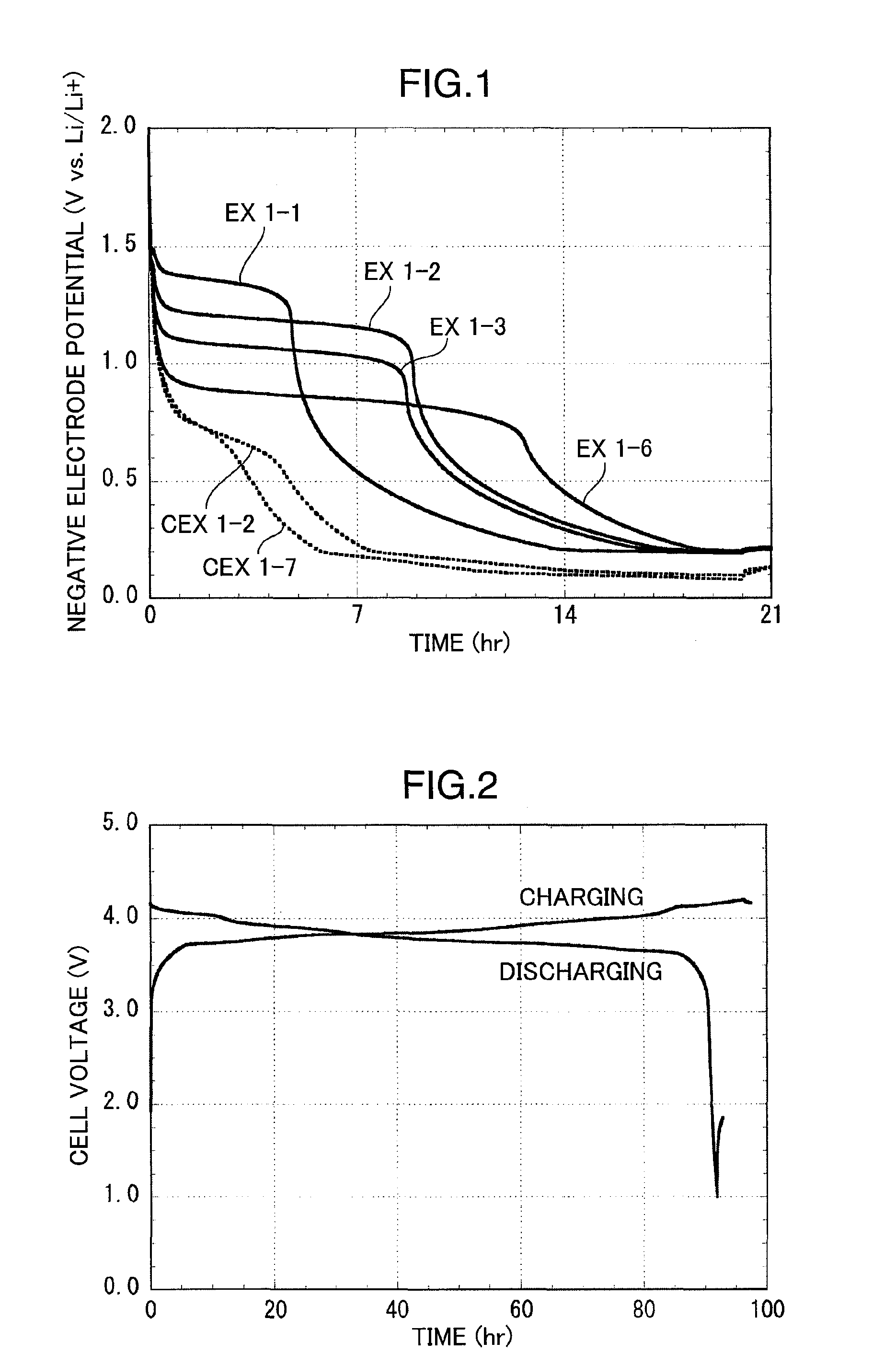Electrochemical energy storage device
a technology of electrochemical energy storage and energy storage device, which is applied in the direction of electrochemical generators, non-aqueous electrolyte cells, cell components, etc., can solve the problems of reducing the number of sites containing lithium ions between layers, affecting the permeability etc., to achieve suppress the reductive decomposition of the electrolyte solution, suppress the per
- Summary
- Abstract
- Description
- Claims
- Application Information
AI Technical Summary
Benefits of technology
Problems solved by technology
Method used
Image
Examples
example 2
[0062]Using a positive electrode material used in a non-aqueous electrolyte battery as a positive electrode and using a polarizable material used in an electric double layer capacitor as a negative electrode, a hybrid capacitor was assembled in the following manner and then evaluated.
[0063]First, in the same manner as in Example 1, a positive electrode plate having a size of 35 mm×35 mm, in which LiCoO2 is used as the positive electrode material, was produced.
[0064]Next, an activated carbon electrode for electric double layer capacitor manufactured by Hohsen Kabushikikaisha was processed to form a negative electrode plate having a size of 35 mm×35 mm.
[0065]As the reference electrode, the same lithium metal foil as in Example 1 was used.
[0066]Besides, EC, LiBF4, TMPA.BF4 and HFB were mixed in a molar ratio (EC / LiBF4 / TMPA.BF4 / HFB=2 / 1 / 1 / 0.1) to prepare a non-aqueous electrolyte solution.
[0067]After the positive and negative electrodes produced above were disposed opposite to each other...
PUM
| Property | Measurement | Unit |
|---|---|---|
| negative electrode potential | aaaaa | aaaaa |
| thickness | aaaaa | aaaaa |
| thickness | aaaaa | aaaaa |
Abstract
Description
Claims
Application Information
 Login to View More
Login to View More - R&D
- Intellectual Property
- Life Sciences
- Materials
- Tech Scout
- Unparalleled Data Quality
- Higher Quality Content
- 60% Fewer Hallucinations
Browse by: Latest US Patents, China's latest patents, Technical Efficacy Thesaurus, Application Domain, Technology Topic, Popular Technical Reports.
© 2025 PatSnap. All rights reserved.Legal|Privacy policy|Modern Slavery Act Transparency Statement|Sitemap|About US| Contact US: help@patsnap.com



